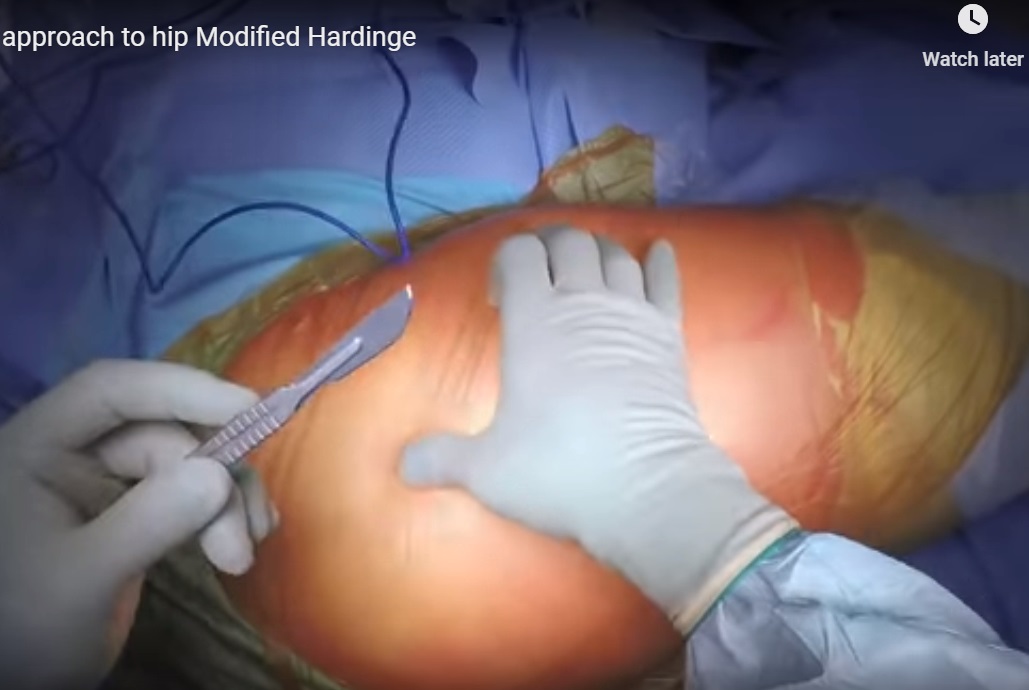Courtesy: Malek Racey, UK

*The anterolateral approach to hip*
The anterolateral approach/ the modified hardinge approach – commonly used for hemiarthroplasty in fracture neck of femur,total hip replacement.
Patient positioning in case of anterolateral approach to the right hip -patient is on his left hand side, surgeon stands behind and looks down on the patients right hip which has been prepared.
Surgical landmarks are now considered- the iliac crest,anterior superior iliac spine. The main landmark for the incision is the greater trochanter which overlies the hip joint itself.
The incision is in line with the femur and it goes from 5cm proximal to greater trochanter to 10cm distal to the greater trochanter. Do not go more proximal than 5 cms because the superior gluteal artery and nerve which supplies the abductor muscles, runs across the incision here and can get damaged on deeper dissection.
Now feel the greater trochanter and place the incision.
The layers being encountered are:
Skin,
Fat,
Fascia,
Muscle,
Capsule.
There is a layer between the fascia and muscle which is the trochanteric bursa.
After dissecting the fat,look for the thick white layer which is the fascia.
The fascia can be too tight, where your assistant can abduct or lift the leg away to make it easier. Underneath the fascia is the muscle layer.
Use retractors, to pull the edges of the fascia lata away so as to get a good view and access to the abductor muscles-the gluteus medius and minimus and the hip joint underneath that.
Gluteus medius is a fan shaped muscle and the fibres join distally to form a tendon that inserts into the greater trochanter.
Underneath gluteus medius is gluteus minimus which also inserts into the greater trochanter. Underneath this muscle is the hip capsule itself. In order to get to the hip joint we need to go through these three layers. We need to do so in a way that let us repair it in the end. Divide the gluteus medius into two imaginary thirds. Draw a line between the anterior one third and posterior two thirds of the muscle and that line would be the line in which we split the muscle fibres.
Remember we are not going beyond 5 cms from tip of the greater trochanter to avoid damage to superior gluteal artery and nerve. We are then going to cut straight across the tendon where it inserts into the greater trochanter but leave enough cuff on both sides so as to repair it later.
Leave a Reply